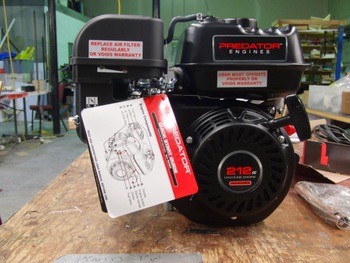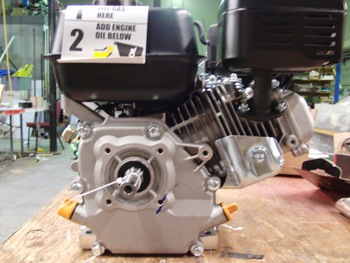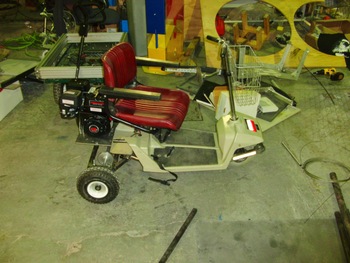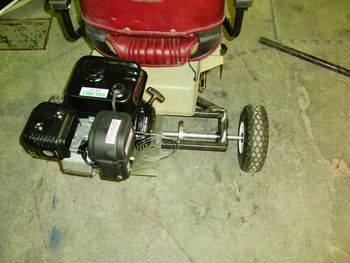Why Go Kart?
Peter, why would you build a go kart? Go karts are dangerous! Go karts are polluting! Go karts are noisy!
Because Go Kart!
Go karts are super fun.
How Much Real Engineering Did You Do?
| CAD Model? | Nope |
|---|---|
| FEA? | Nope |
| Static analysis, then? | Nope |
| Back of the envelope, at least? | Nope |
| Top speed calculations | 22 MPH, Baby! |
| Helmet | Yep! |
How Did That Work Out?
You should always use CAD when building stuff. Finding out that things don't fit after you've already welded sucks. Still, the kart turned out super fun and reasonably functional.
The Build
This project started of as an itch I had. I wanted to have some project that required engineering work, was kinda crazy, and that would make me feel alive. Contenders were a huge crossbow, flamethrower hands, or a go kart. The go kart is actually the most reasonable of those choices! I'm responsible!
What really tipped this project over the activation energy of my lethargy was the old mobility scooter frame we had in the robotics lab, and the fact that Harbor Freight sells a 6.5 HP engine for $120.
The first step, before fully conceptualizing where everything would fit, or what size gear ratio to use, was to weld a new back end together. This was designed by the age-old principle of "how much steel tube do we have?"
The axle was chosen to be 3/4" for 3 reasons: we had that size axle, we had that size bearings, and we had that size solid rubber 10 inch tires with hubs already machined and mounted. However, when we were doing driveline calculations, we assumed that our wheels were 12 inches instead of 10, so we got an 8 inch sprocket. Not a whole lot of clearance on that. We kept dropping the chain.
After fabricating a mounting plate for the the engine, and attaching a centrifugal clutch to the engine, we had minimally functioning kart. Notice the things that are not included so far: brakes and a throttle. We used our feet to brake (I named this "reverse Flintstones" style), and we articulated the throttle by pulling a cable between our legs. There were two flips, both from a stuck throttle, and when I flipped it, the engine flooded and hydro-locked.
With the initial burning desire to go fast satiated for the moment (and one of the team with extremely skinned elbows and knees), we took a breath and purchased a real throttle and brake caliper. Since we had so much luck on that engine from Harbor Freight, I decided to go out on a limb and get some 13" tires from them. This was not a good idea. First the stamped steel wheels completely deformed and tore free from their bolts. Fixing that was a day in the machine shop, fabricating 6061 Aluminum plates. This is a great example of how ludicrous this whole project was, from a purchasing standpoint. Things that the robotics lab already had (Aluminum plate, bearings, steel tube), were great quality. Things that had to be purchased on a student budget were literally the cheapest stuff we could find (brake caliper, engine, and wheels). Their inadequacy was made up for with machine time and material from the scrap bin.
Except for the tires. Those just suck. So far, we've blown through 2 tires, and 4 inner tubes. The tentative cheapo solution is to use "fix-a-flat" to make DIY foamcore wheels.
Results and Conclusions
This project was absurdly fun. There is no better way to spend your graduating semester than running around from machine shop to lab to Harbor Freight, in pursuit of a poorly conceived and minimally implemented fevered dream.
When I was a young kid, I hated to be called "Peter Pan." Now that I'm on the corner of adulthood, I can really emphasize with his quote "I'll never grow up, never grow up, never grow up! Not me!"



